Two blocks of masses 2.9 kg and 1.9 kg are suspended from a rigid support S by two inextensible wires each of length 1 m. The upper wire has negligible mass and the lower wire has a uniform mass of 0.2 kg/m. Thewhole system of block, wire and support have an upward acceleration of 0.2 m/s2. g = 9.8 m/s2. The tension at the mid-point of lower wire is- 
10N
20N
30N
50N
The correct Answer is:B
TB=(1.9+0.1)×10=20N
Topper's Solved these Questions
- BOOK - ALLENCHAPTER - NEWTONS LAWS OF MOTIONEXERCISE - EXERCISE-III28videos
NEWTONS LAWS OF MOTION
- BOOK - ALLENCHAPTER - NEWTONS LAWS OF MOTIONEXERCISE - EXERCISE-I52videos
NEWTONS LAWS OF MOTION
- BOOK - ALLENCHAPTER - NEWTON'S LAWS OF MOTION & FRICTIONEXERCISE - EXERCISE (JA)4videos
NEWTON'S LAWS OF MOTION & FRICTION
- BOOK - ALLENCHAPTER - RACEEXERCISE - Basic Maths (Wave Motion & Dopplers Effect) (Stationary waves & doppler effect, beats)25videos
RACE
Similar Questions
Two blocks of mass 2.9 kg and 1.9 kg are suspended from a rigid support S by two inextensible wires each of length 1 meter, see fig. The upper wire has negligible mass and the lower wire has a uniform mass of 0.2kg/m. The whole system of blocks wires and support have an upward acceleration of 0.2m/s2. Acceleration due to gravity is 9.8m/s2.
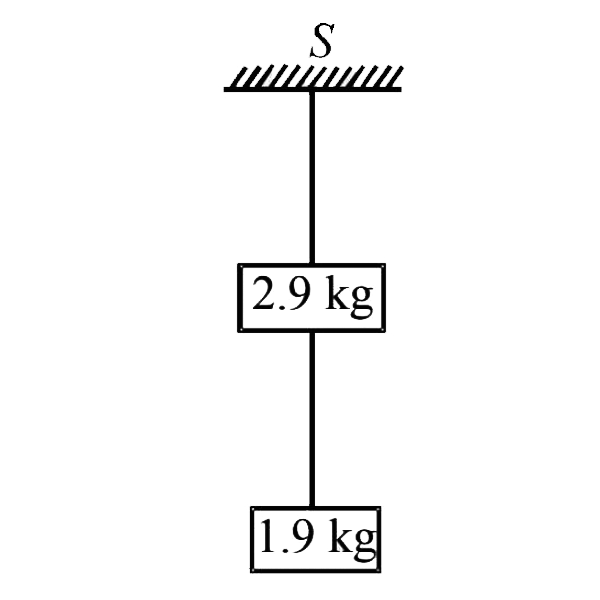
(i) Find the tension at the mid-point of the lower wire.
(ii) Find the tension at the mid-point of the upper wire.View SolutionTwo block of mass 2.9kg and 1.9kg are suspended from a rigid support S by two inextensible wires each of length 1m , as shown in figure.The upper wire has negligibible mass and the lower wires and support have an uniformly mass of 0.2kg .The whole system of blocks, wire and support have an upwardds acceleration of 0.2m/s2. Accceleration due to gravity is 9.8m/s2.
(a) Find the tension at the mid point of the lower wire.
(b)Find the tension at the mid point of the upper wire.
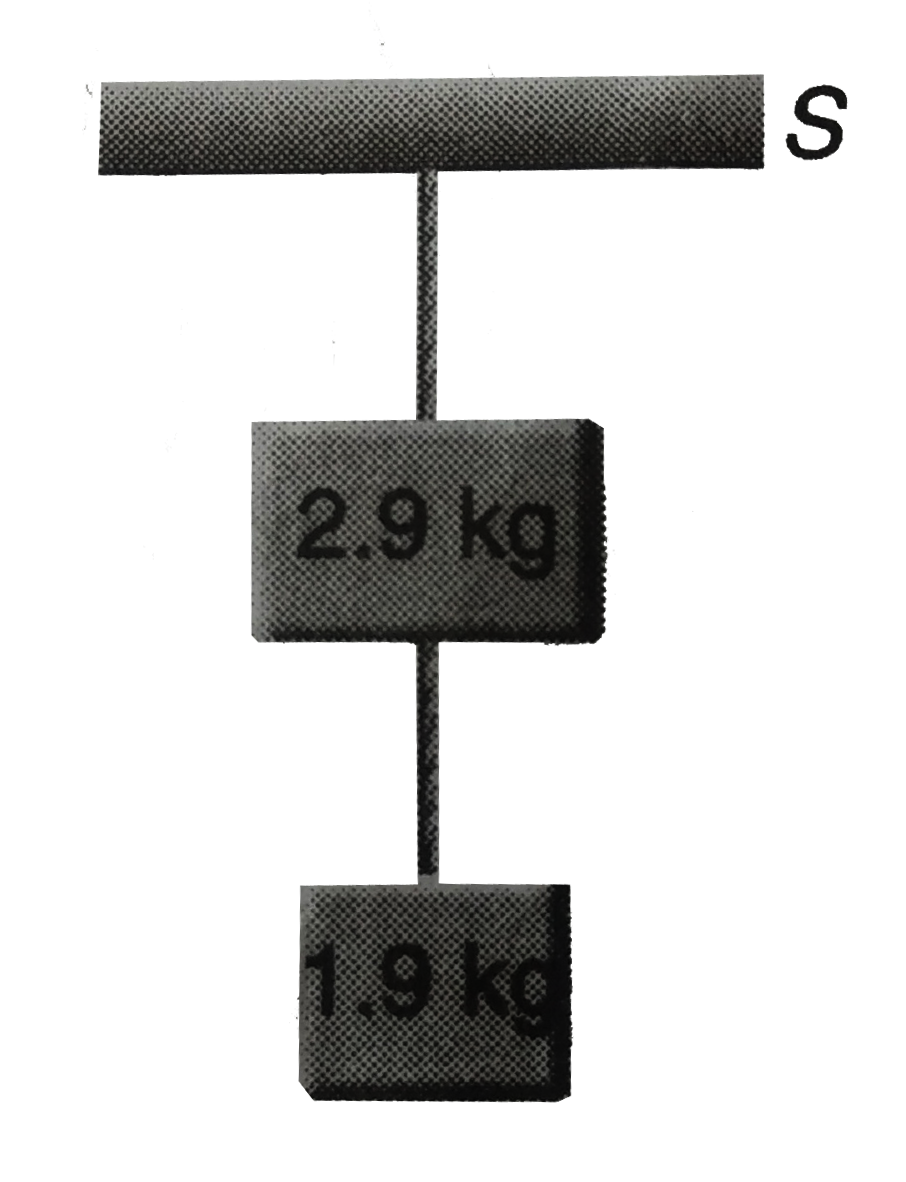 View Solution
View Solution
Knowledge Check
- Question 1 - Select One
A lifts is tied with thick iron wires and its mass is 1000 kg. The minimum diameter of wire, If the maximum accelertion of lifts is 1.2m/s2 , is ( g =9.8m/s2)
A0.00141 mB0.00282 mC0.005 mD0.01 m - Question 2 - Select One
The mass of a lift is 500 kg. What will be the tension in its cable when it is going up with an acceleration of 2.0 m/s2 ? (Take, g = 9.8 m/s2)
A5000 NB5600 NC5900 ND6200 N - Question 3 - Select One or More
A metal wire of length L is suspended vertically from a rigid support. When a bob of mass M is attached to the lower end of wire, the elongation of the wire is l:
AThe loss in gravitational potential energy of mass M is Mgl.BThe elastic potential energy stored in the wire is MglCThe elastic potential energy stored in the wire is 12MglDHeat produced is loss of mechanical energy of system is 12Mgl
As shown in Fig. 5-51, body C (2.9 kg) and body D (1.9 kg) are suspended from a rigid support by inextensible wires B and A, each of length 1.0 m. Wire B has negligible mass, wire A has a uniform density of 0.20 kg/m. The whole system undergoes an upward acceleration of magnitude 0.50 m/s2. Find the tension at the midpoint in (a) wire A and (b) wire B.
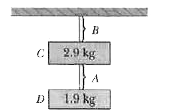 View Solution
View SolutionFig show two bodies A and B of masses 2.5 kg and 2.8 kg respectively from a rigid support by two inextensible wires each of length 1.8 m . The upper wire is of negligible mass and lower wire is of mass 1.5kg/m . If the entire system moves upwards with an acceleration of 2m/s2, find tension (i) at middle point p of upper wire (ii) at middle point Q of lower wire . Take g=10m/s2
.
View SolutionTwo masses of 5 kg and 3 kg are suspended with help of mass less inextensible string as shown. Calculate T1andT2 when system is going upwards with acceleration m/s2.(Use g=9.8m/s2).
 View Solution
View SolutionTwo blocks of masses m and 2m are connected through a wire fo breakig stress S passing over a frictionless pulley. The maximum radius of the wire to be used so that the wire may not break is
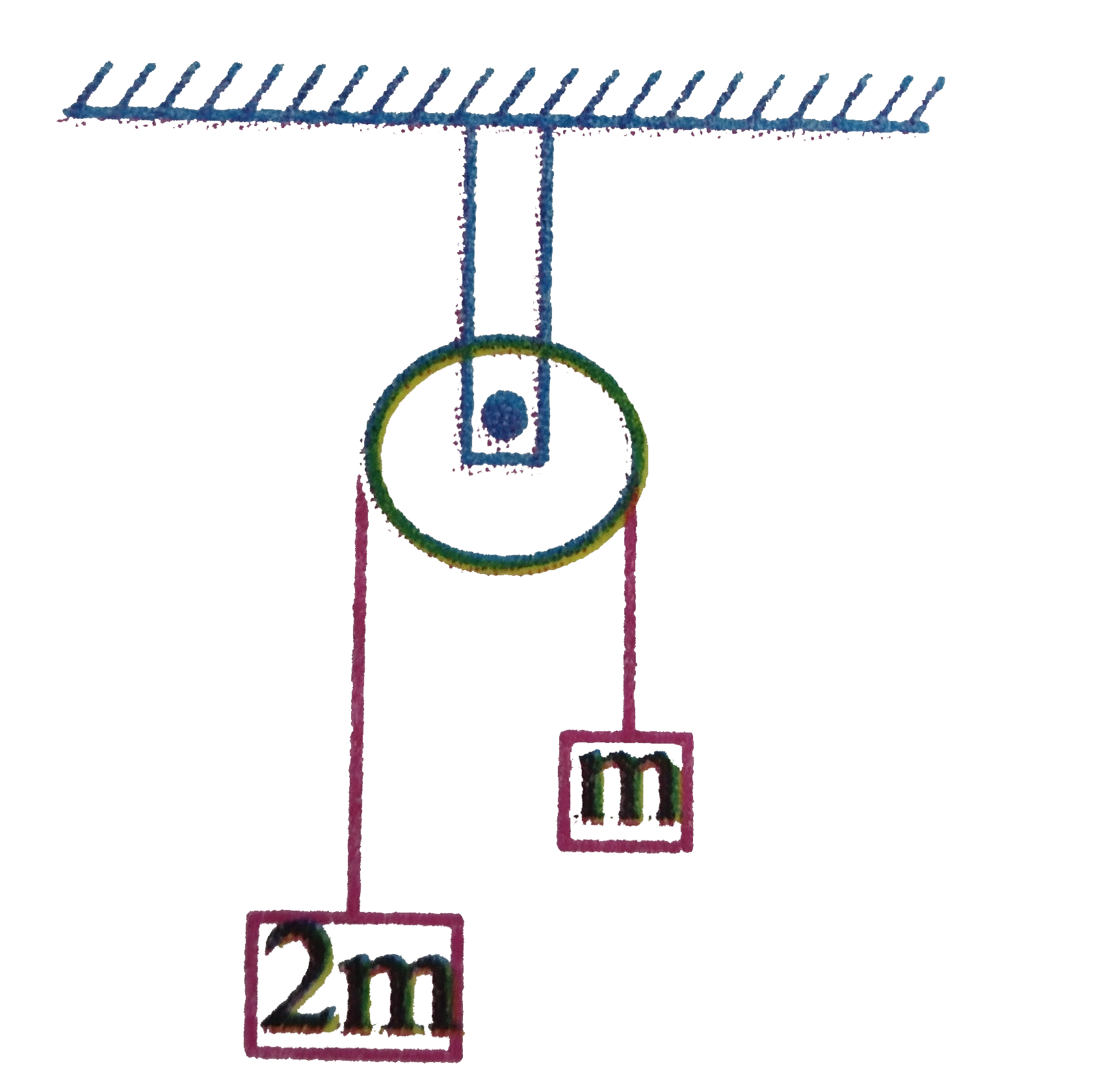 View Solution
View SolutionTwo masses of 5kg and 3kg are suspended with help of massless inextensible strings as shown in figure. Calculate T1and T2 when whole system is going upwards with acceleration =2m/s2(useg=9.8ms−2).
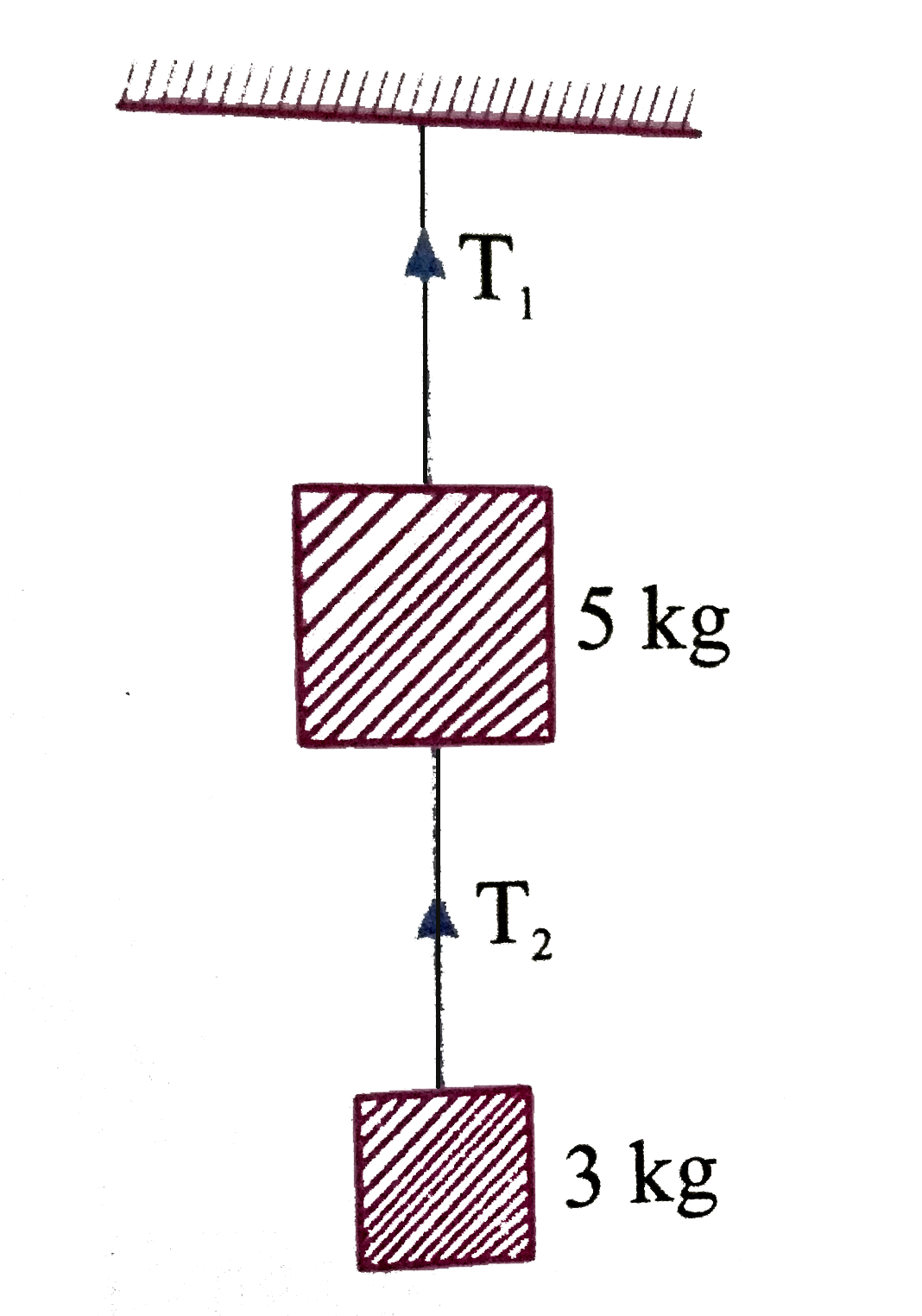 View Solution
View Solution

